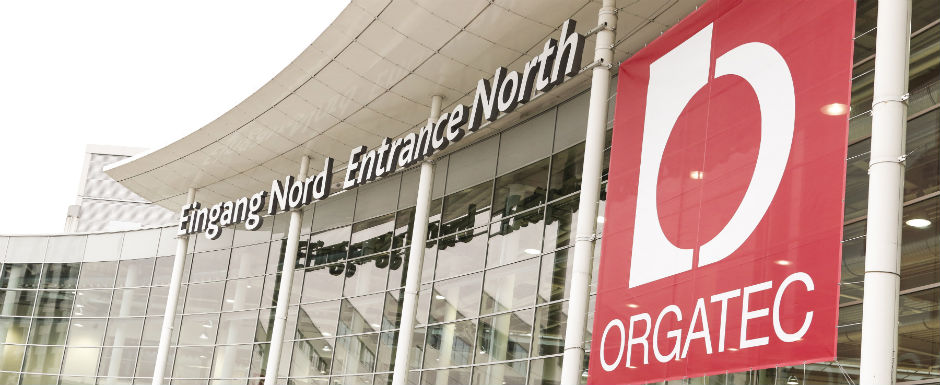
From October 21st to 25th, the ORGATEC, the world's leading biennial trade fair for Office and Facility, was held in Cologne. It is the world’s largest and most reputable fair specializing in office facilities and furniture.
This year, over 50,000 participants from more than 120 countries attended the fair. Among them, 2000 visitors were from Italy. Visitors from the United States and Canada were much more than before.
624 companies from 41 countries presented their own solutions to the “future workspaces” in the exhibition space covering 105,000 square meters. The fair is consisted of four parts, ORGATEC Office, ORGATEC Interaction, ORGATEC Space and ORGATEC Mobile Multimedia, covering Office and Facility equipment, flooring, acoustics, lighting, multimedia and conference technology equipment.
As a solution provider and a realizer to improving working environment and space, Matsu stayed tuned to the event. Matsu uses its knowledge and judgment and concludes eight trends of the industry out of this year’s grand fair.
Trend 1: Flexibility in people and space
In old days, working spaces for employees are fixed, unmoved and still. Everyone is confined in 8 square meters, working on his or her own. However, now employees are freer to work in a flexible working environment: in the same space, employees may have the options of choosing their own spaces in terms of size and nature, while the working space is flexibly adjusting itself and facility equipment in it to meet a wide variety of requirements from different employees or different job positions. This is the new concept of “temporary” space.
Trend 2: Soft Space that Absorbs Sounds and Noises
As the working stations become more open, employees interact with each other more frequently every day, leading to another big problem in workplace now and for the future: office noises. The old way to deal with it was to sound-proof the environment with glass or board to establish compartments. But in this year’s fair, things have been changed: office and facility equipment is finished with soft materials, and some furniture is designed to create semi-private spaces with compartment effect. The soft materials better absorb sounds to reduce noises; on the other hand, furniture itself is more flexible than hard compartments which may not be suitable for temporary adjustment.
Trend 3: Power of Technology (multimedia integrating with office furniture)
Technology has changed the way people live, and work, too. It not only brings much more interactions into our lives, but also draw people closer to each other in social networking. Meanwhile, technology transforms office space into urban living space, since no matter where you are in the city, you can exchange information and work on texts through terminals on mobile devices or computers.
How to integrate office furniture with multimedia technologies, or how to manage multimedia devices in the design of office furniture? These questions are what participants of this year’s fair are thinking about, researching on and trying to find answers to. For example, they are working on how to maintain the steadiness of rising screens, how to make furniture wireless battery chargers, or how to build in touch-on keyboards into furniture.
Trend 4:Informal meeting spaces
Discussions, communications, reporting and sharing don’t have to happen only in confined spaces, like the conference rooms. They can take place anywhere in the workplaces, like by the tables in a tea and coffee room, or in the small discussion areas besides open-style working stations. These are the informal meeting spaces where communications are everywhere, inspirations are sparkled, and encounters are transformed into effective cooperation. This is the magic power of informal meeting spaces.
Trend 5: Stylized and Integrated
Seats, working stations, lighting systems…everything should be taken into consideration when it comes to the integrated space design. Office furniture set are developed and customized to create unique brand cultures for enterprises. For example, Vitra creates Prouvé RAW Office Edition for G-star, in which the strong sense of industrial elements and mechanic beauty echo the brand soul of G-star.
Trend 6: Home Office
The use of comfortable, relaxing and diversified elements in space design gives a touch of homey feel to the professional workplace. People feel like they are working at home. There was a special event in this year’s fair called Being Home, Boulevard Nord.
Trend 7: Working Standing-up (popularization of rising tables)
You don’t have to sit there all day while working in office areas. Nowadays, working standing-up is a new way to adjust your working status and improve working efficiency, so it is more and more recognized by the market. The shift in working--and even living--style brought by these tables are benefiting people’s health and keeping them away from ‘office diseases’.
Trend 8: Focus Spaces (personal table or office telephone booth)
As space is more open and interactive, communications dominate in the working environment and focused thinking becomes an impossible thing. The focus space, or personal table, solves the problem. If you need to work on your own, stay by your table where you may find peace in thinking.